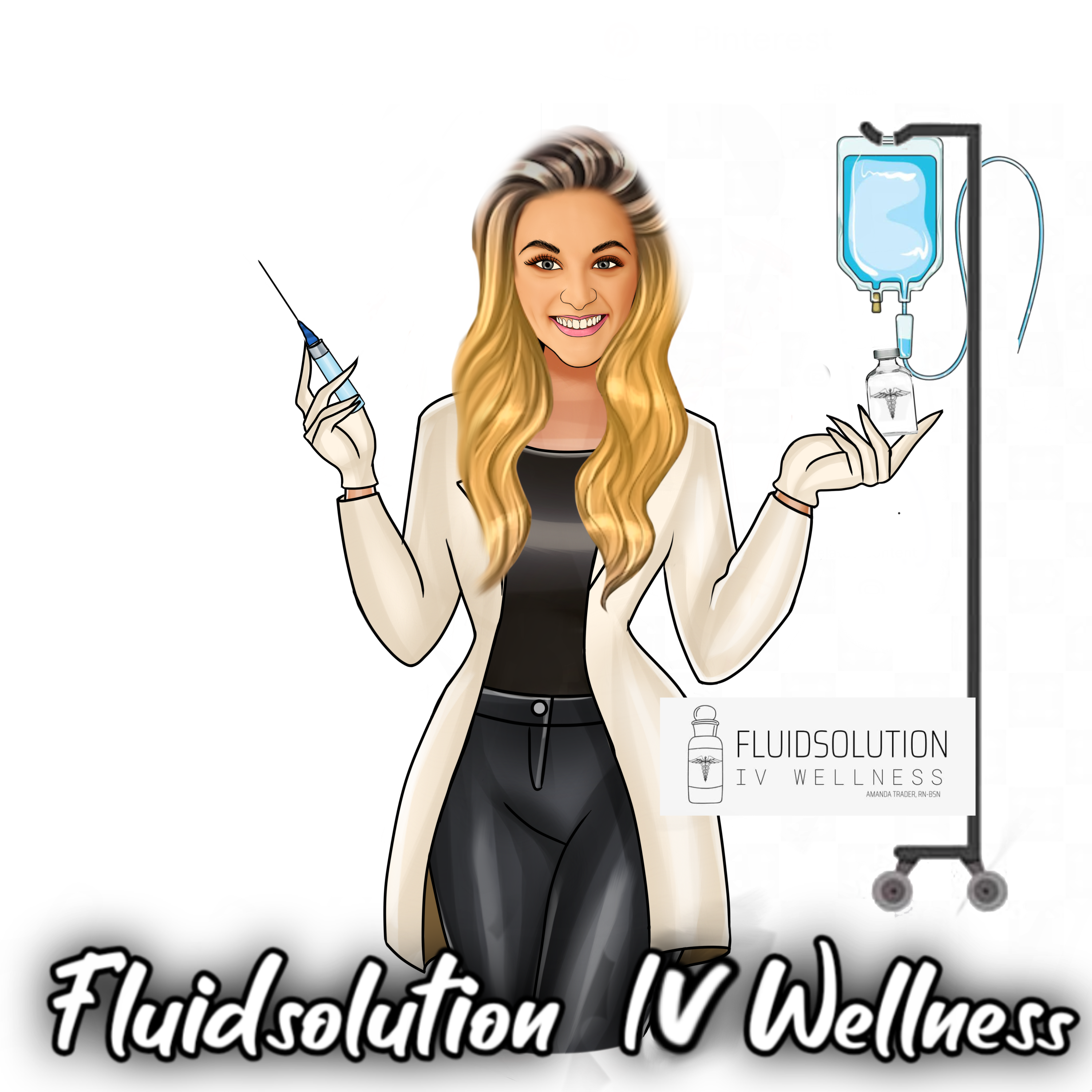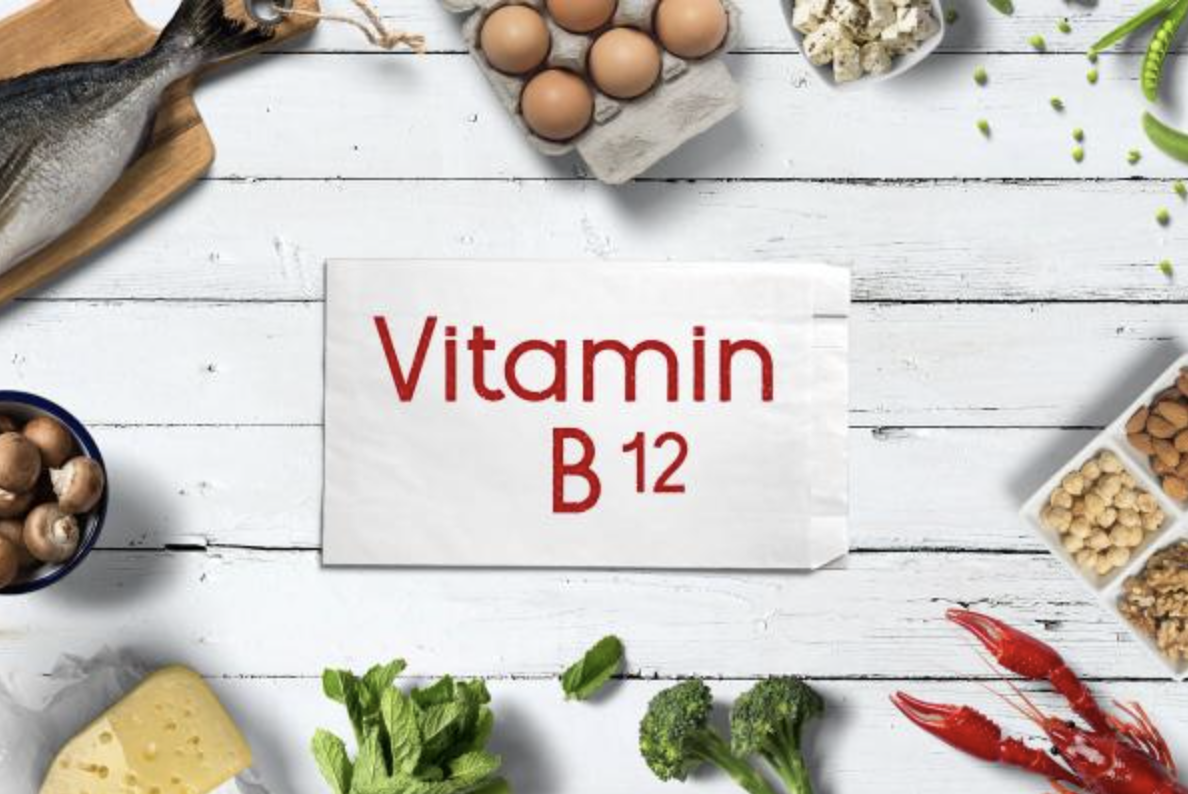
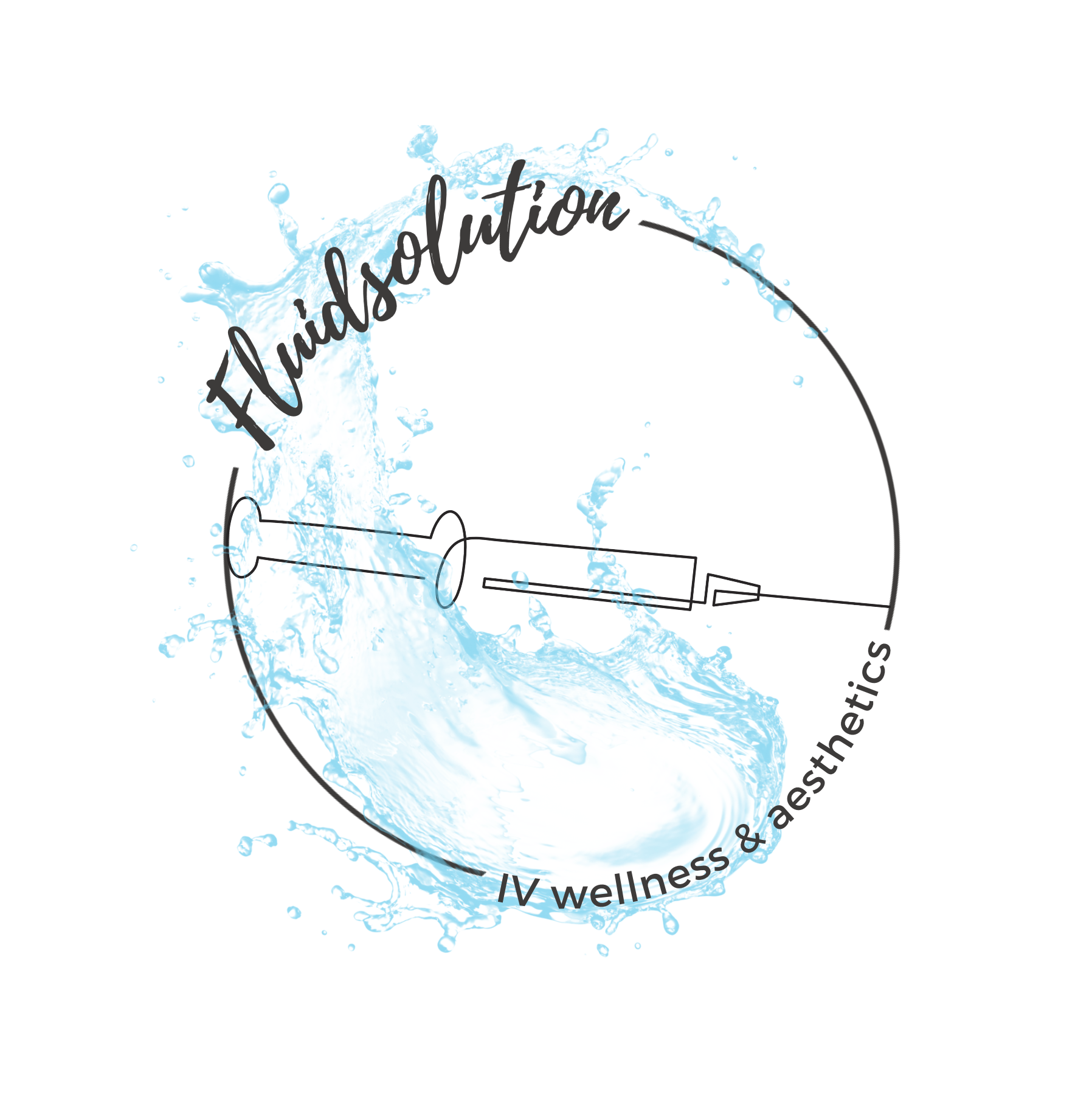
5632601475
How Vitamin B12 Affects the Body
Vitamin B-12 aides in the growth of healthy blood cells, nerve cells, and bodily proteins; assist with the metabolism of fats and carbohydrates to release energy; help regulate appetite and mood (key factors in overeating); and are a great treatment for people who cannot absorb vitamin B-12. Vitamin B-12 is an essential water-soluble vitamin that is commonly found in a variety of foods such as fish, shellfish, meat, eggs, and dairy products. Important in DNA synthesis, vitamin B-12 is frequently used in combination with other B vitamins in what is known as a vitamin B-complex formulation. Vitamin B-12 is bound to the protein in food, and released by stomach acids during digestion. Once released, B-12 combines with a substance called intrinsic factor (IF) before it is absorbed into the bloodstream.
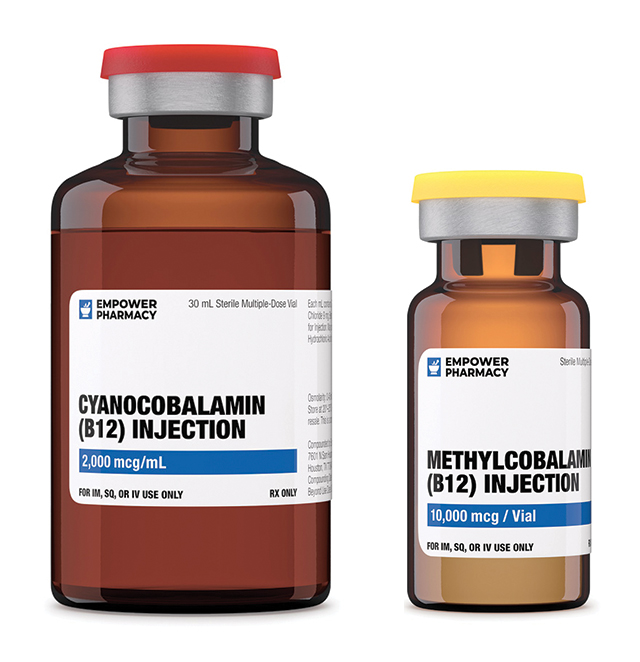
The human body stores several years' worth of vitamin B-12 in the liver, so low levels in the body are rare. Decreases in vitamin B-12 levels are more common in the elderly, HIV-infected persons, and vegetarians. Vitamin B-12 deficiency is often defined by low levels of within the body stores of this vitamin, which can result in anemia – a lower-than-normal number of red blood cells wherein some of the symptoms include fever, excessive sweating, and soreness or weakness in the arms and legs. The inability to absorb vitamin B-12 from the intestinal tract can lead to various types of anemia, the most prominent of which is a type of megaloblastic anemia called pernicious anemia. However, this form of anemia is quickly remedied through vitamin B-12 supplementation.
Vitamin B-12 has a fascinating history, which rounds out over a decade of vitamin research as one of the last vitamins to be discovered. An essential daily nutrient, vitamin B-12 is needed to maintain healthy red blood cells, healthy nerve cells, and to make DNA. However, it was discovered as a cure to a condition known as pernicious anemia, which is directly related to a vitamin B-12 deficiency.
Pernicious anemia is a blood disorder in which red blood cells fail to develop normally, resulting in the steady decline of red blood corpuscles that was fatal until the 1920s. The disease was first described completely in 1849 by English physician Thomas Addison (1793-1860), who noted that the typical symptoms included increasing weakness and pallor, accompanied by obesity or weight gain rather than weight loss.123
Numerous scientists played roles in helping to discover and isolate the causes and cure for anemia:456
Dr. Newcastle was never looking for a vitamin supplement, but rather a simple cure for pernicious anemia. He discovered that administering regurgitated gastric juices to his patients caused disease improvement.
Dr. George Whipple's (1878-1976) studies showed that beef liver could improve the formation of red corpuscles in anemic dogs. He bled dogs to induce anemia and then set about to find out which foods would cause the dogs to recover the quickest. He discovered that feeding the dogs raw liver essentially cured anemia. Thus, raw liver, or raw liver juice became the treatment of choice for pernicious anemia. He recommended patients eat at least a 1/2 pound per day.
George Minot and William Murphy were two researchers who set about to try to isolate the curative property of raw liver. They were successful in showing that the curative property was in the liver tissue. For their respective roles in the discovery of a cure of pernicious anemia Whipple, Minot, and Murphy all won the 1934 Nobel Prize in Medicine.
Edwin Cohn created a liver extract that was substantially more potent than simply eating raw liver.
American and British researchers Karl A. Folkers and Alexander R. Todd respectively, simultaneously discovered, isolated, and named cobalamin (vitamin B-12) in 1948.
Dorothy Crowfoot Hodgkin with more sophisticated technology, using crystallographic data, was able to determine the molecular structure of vitamin B-12. This made it possible in the 1950s to produce large quantities from bacteria cultures leading to the modern form of treatment for the disease. She also won a Nobel Prize for her work.
Vitamin B-12 Deficiency
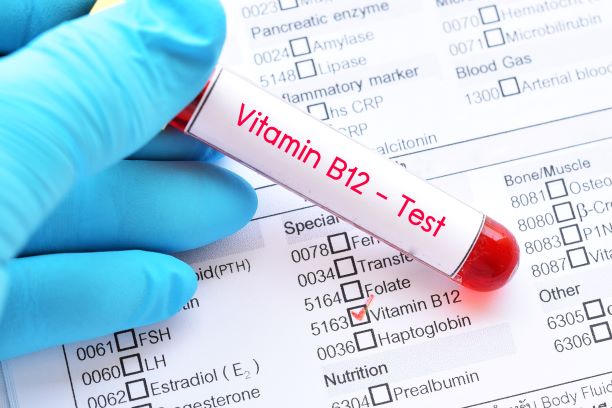
Pernicious anemia is a decrease in red blood cells that occurs when your intestines cannot properly absorb vitamin B-12, and presents a host of complications and symptoms. However, studies have shown that a deficiency of vitamin B-12 can also lead to abnormal symptoms. These symptoms may include ataxia (shaky movements and unsteady gait), muscle weakness, spasticity (stiff or rigid muscles), incontinence (lack of bladder and/or bowel control), hypotension (low blood pressure), vision problems, dementia, psychoses (abnormal condition of the mind), and mood disturbances. Giving vitamin B-12 by mouth, by injection, or by nasal inhalation is effective for preventing and treating dietary vitamin B-12 deficiency.
There exists a long list of other conditions, disorders, and complications related to vitamin B-12 deficiency, and on which the research remains unclear/inconclusive, but has shown some improvement during vitamin B-12 supplementation including:789
Alzheimer's disease, Angioplasty (opening narrowed/blocked arteries), Breast cancer, Canker sores, Cardiovascular disease/hyperhomocysteinemia, Cervical cancer, Claudication (leg pain from clogged arteries), Depression, Diabetic neuropathy (nerve damage), Diagnostic procedure, Facial spasm, Fatigue, Fractures (prevention), High cholesterol, Imerslund-Grasbeck disease, Joint pain (elbow), Mental performance, Poisoning (cyanide), Shaky-leg syndrome, Sickle cell disease, Sleep disorders (circadian rhythm)
Vitamin B-12 Sources and Treatments

Vitamin B-12 is necessary to produce an adequate amount of healthy red blood cells in the bone marrow, is available only in animal foods (meat and dairy products) or yeast extracts (such as brewer’s yeast). Vitamin B-12 is a water-soluble vitamin, which means it easily dissolves in water and is paradoxically stored in the liver (making it a good source). It is eliminated from the body through the urine, typically between 24 and 72 hours after consumption, depending on how active a person is and the amount of fluids they take in. Due to the rapid rate with which the body processes Vitamin B-12 frequent supplementation is needed to address deficiencies.
The stomach acids that aid in the natural breakdown of food also breakdown vitamin B-12 pill supplements, the body will only absorb a small amount when ingested orally. In addition, as a person gets older the body’s ability to absorb B-12 through digestion continually decreases. In fact, many adults are completely unable to absorb B-12. Injections provide a direct and concentrated method of supplying the body with the vitamin B-12, and are of particular value to older populations when normal absorption rates decrease, even in the absence of pernicious anemia. The conventional way of fixing a vitamin B-12 deficiency has been through intramuscular injections.8
Research findings show ample evidence to reveal that injections of 1 to 2 milligrams per day can quickly correct deficiencies. It is not apparent whether smaller amounts, such as the 25 micrograms or so found in multivitamins, are sufficient to cure deficiencies. Such a claim is substantiated by the fact that although oral supplementation with vitamin B-12 is safe, efficient, and inexpensive most multi-vitamin pills contain 100-200 micrograms of the cyanocobalamin or methylcobalamin forms of B-12. Furthermore, many multivitamins cannot be chewed, which is important for their thorough absorption.
Routine B-12 injections at a dosage of 1 milligram per month also helps to lower homocysteine levels in the blood, thereby reducing the probability of heart diseases and strokes. A vitamin B-12 injection acts as a stimulant for energizing the body, through cobalamin, which transmits its “anti-stress” elements to the human body. For example, the recommended effective cure for chronic fatigue syndrome (CFS) is 6 to 7 milligram dose of vitamin B-12 intramuscular injection per week for 3 weeks.

What Is IV Nutritional Therapy?
General Information on IV Nutrient Therapy

There are several ways that people refer to IV nutritional therapy. Some people call it IV vitamin therapy, while others call it IV micronutrient therapy. Regardless of name preference, the purpose remains the same: to provide supplemental vitamins and micronutrients into your body to improve the body's state of health and overall well-being. IV stands for intravenous, meaning that the vitamins and micronutrients are administered into the body through the veins.
IV nutrient therapy administration has become increasingly popular in recent times. Some athletes receive intravenous vitamins after their games to help improve speed up their recovery. Another common reason people seek out IV vitamin therapy is in managing certain medical conditions; some studies that have been performed indicate that supplemental IV vitamin administration may help relieve symptoms of fibromyalgia, migraines, and hypertension, among others.12
IV vitamin therapy is not a new concept; it has been in existence since the early eighties. One of the earliest types of IV Vitamin therapy developed was by the late Dr. Myers; he came up with the Myers' Cocktail comprising magnesium, calcium, vitamin C, and other B-complex vitamins. As a matter of fact, the Myers' Cocktail played a major role in popularization and generalized adoption of IV Vitamin therapy by individuals all over. Since the Myer's Cocktail's original development, many other combinations of IV Vitamin therapy have been developed.
A layperson may be interested in finding out if IV Vitamin therapy is beneficial for them. However, given the fact that there are many types of intravenous micronutrients available, a patient should consult with their healthcare provider first. After performing an assessment, a healthcare provider is able to recommend what combination of vitamins and a patient needs to achieve their health goals. Additionally discussed are the types of IV Vitamin therapy available, risks and benefits of its use, components of IV Vitamin compounds, as well as some common use cases. If someone is wondering if IV therapy is right for them they should consult with their doctor.
How Does IV Micronutrient Therapy Work?
Most people generally consume their vitamins and micronutrients through their food; some people may also take additional multivitamin supplements. When vitamins and micronutrients are ingested orally, they go down to the stomach and intestines, where they are broken down by gastrointestinal enzymes and then absorbed into the bloodstream. There is a limit to how fast these substances can be absorbed from the gastrointestinal tract; what is not absorbed continues through the body and is excreted as stool. Also, most substances absorbed from the intestine pass through the liver for more processing before it goes to the rest of the body. Other factors that impact the amount of vitamins absorbed from the intestine are an individual's metabolism, age, genetics, and interactions with other orally consumed products. Ultimately, a significant amount of the orally ingested vitamins and micronutrients is lost, and only small amounts pass to the rest of the body. As with most of the vitamins and micronutrients going to waste, the body does not derive the full benefits of these substances when they are orally ingested as food or other supplements.
With IV Vitamin therapy, the minerals and vitamins are administered into the body through the veins. By this route of administration, vitamins and micronutrients avoid the metabolism in the intestine. Also, the substances get into the bloodstream and around the body faster as they are not limited by how quickly they can be absorbed, as is the case with oral application. Ultimately, only small amounts of vitamins and micronutrients go to waste during IV Vitamin therapy; most of it is absorbed and used by the body. As a result, the body gains the vitamins and micronutrients' full benefits when administered through the veins rather than by mouth.3
What are the Components of an IV Micronutrient Infusion?
There are a variety of substances that may be in typical IV micronutrient infusion. Most times, the IV micronutrient infusion components are tailored to the reason for its use; different illnesses or medical conditions may require a particular combination of IV vitamins and micronutrients. Additionally, the components of an IV vitamin bag may also be tailored based on the needs of the individual receiving the infusion; individuals may tolerate some components more than others or be intolerant to specific substances.
Generally, some substances that may be found in a typical IV vitamin infusion bag include the following:
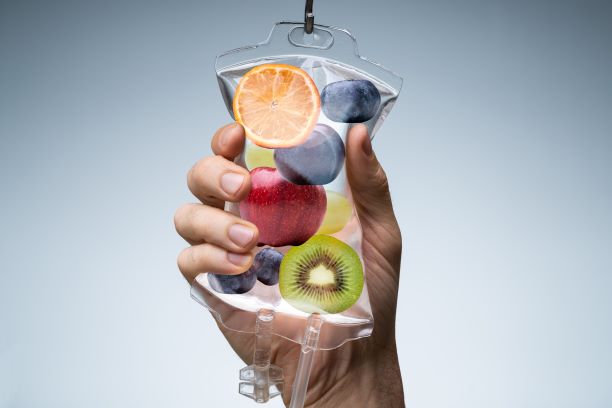
Vitamin C – Studies have been performed that indicate several of the benefits of intravenous vitamin C. In the critically ill, vitamin C administered intravenously may help in the management of sepsis; it may also be of use in managing certain kinds of cancer. For individuals in good health, intravenous vitamins may serve to boost immunity and increase energy levels.45
Vitamin B complex – Several vitamins make up the B complex group of vitamins. Some of these vitamins are Vitamin B1 (Thiamine), Vitamin B2 (Riboflavin), Vitamin B3 (Niacinamide), Vitamin B5 (Dexpanthenol), and Pyridoxine (Vitamin B6). These vitamins play essential functions in the processes that place in the human body.
Vitamin B12 – This is also known as cyanocobalamin. It serves many purposes in the human body; however, its primary function is in the production of red blood cells. A deficiency of this vitamin may result in a condition known as macrocytic megaloblastic anemia.
Folic acid - This is also known as folate. Similar to cyanocobalamin, folic acid helps in the development of red blood cells. Its deficiency may also result in macrocytic megaloblastic anemia.
Calcium – Calcium is necessary for the development of strong and healthy bones. People who are lacking in calcium in their body may end up with a condition known as osteoporosis.
Glutathione – This is an antioxidant that facilitates many key processes in the body.
There are many more vitamins and micronutrients that may be included in an intravenous micronutrient therapy infusion. As earlier stated, it is advisable to consult with a healthcare provider before starting on an IV vitamin regimen; this helps ensure the needed vitamins and micronutrients are received and in the correct amounts.
When Should You Receive an IV Micronutrient Infusion?
There are no definite answers regarding who should take vitamin C or benefit from intravenous vitamin infusion therapy. A person may start with an IV vitamin therapy if their healthcare provider recommends it. Other considerations that may warrant the need for IV vitamin therapy are the following:
Individuals suffering or recovering from illnesses; IV vitamins may help boost the immune system and speed up recovery.
Individuals who feel run down and have chronic low energy.
Individuals with mood disorders such as depression and anxiety.
Athletes before and after major sporting activities.
For the most part, anyone can receive an IV vitamin infusion. The components are generally well-tolerated, and the risks of adverse effects, though present, are mild.
Types of IV Micronutrient Therapy
There are many types of intravenous vitamin infusions that are available for administration. These types can be categorized based on the reason for which the infusions are administered. The different types of IV vitamin bags often have many similar ingredients; what makes them different is the quantities of the individual ingredients in each vitamin bag type. Some common types of IV micronutrient therapy infusions are:
Myers cocktail: As mentioned earlier, this is one of the earliest and most common IV vitamin therapy types. There are a variety of recipes that can be used to make up the Myers cocktail, depending on the physician as well as the preferences of the individual receiving the infusion.
Immune boosters: These IV bags contain ingredients that have been shown to help the immune system. These infusions are designed to improve the time it takes for healing to occur, reduce inflammation and duration of illnesses, and guard against infection.
Metabolism boosters: These infusions are designed to boost overall body metabolism, restore energy levels, burn off body fat, and improve body performance.
Recovery enhancers: These infusions are mainly for athletes or those who perform frequent high-intensity exercises. The ingredients in these bags have been shown to reduce tissue inflammation, shorten the recovery time after the exercise, replenish essential nutrients, and improve the athletes' overall performance.
In addition to the ones listed above, there are many other types of intravenous micronutrient types available. By consulting with their healthcare provider, patients can better understand the type of vitamin therapy best suited to them.
How IV Vitamin Therapy Infusions are Administered

The administration of an IV vitamin infusion should generally be done in a professional setting such as a healthcare provider's office or any other appropriate outpatient setting. In addition, to minimize the risks of infections or other complications, the infusion should be administered only by familiar and skilled personnel with the process. The general process for the administration of an IV vitamin infusion bag is as follows:
The individual will be seated or laying down comfortably.
A tourniquet should be applied to the upper arm or forearm so that veins below the tourniquet become visible and distended.
Once an appropriate vein has been selected, thoroughly wipe the skin with an alcohol-based solution.
After the skin is dry, an appropriately sized needle or cannula should be used to establish an IV line.
Once the IV line is set, the bag can then be connected to the IV line so that its contents flow into the patient. The rate at which the bag empties through the IV into the body varies; generally, the IV vitamin bags are set to flow for about 30 – 45 minutes.
There are no clearly set limits regarding how frequently an individual can receive an IV vitamin infusion or how many bags can be received. These mostly depend on the instructions established by the healthcare provider and how quickly the individual responds to the therapy.
Possible Side Effects
Intravenous vitamin infusions are generally safe, with minimal side effects. When they do occur, side effects may be due to poor antiseptic conditions during the administration of the infusion. In addition, some side effects may occur as a result of hypersensitivity reactions to one or more of the ingredients in an infusion. For example, magnesium in an infusion bag may cause a flushing sensation around the head, neck, and chest areas. Also, potassium administration may cause cardiac excitability and arrhythmias in some people. For this reason, those receiving an infusion for the first time should have it titrated slowly and should be monitored closely for any side effects. If any side effects are detected, the infusion should be immediately discontinued.
https://www.empowerpharmacy.com/what-is-iv-nutritional-therapy
